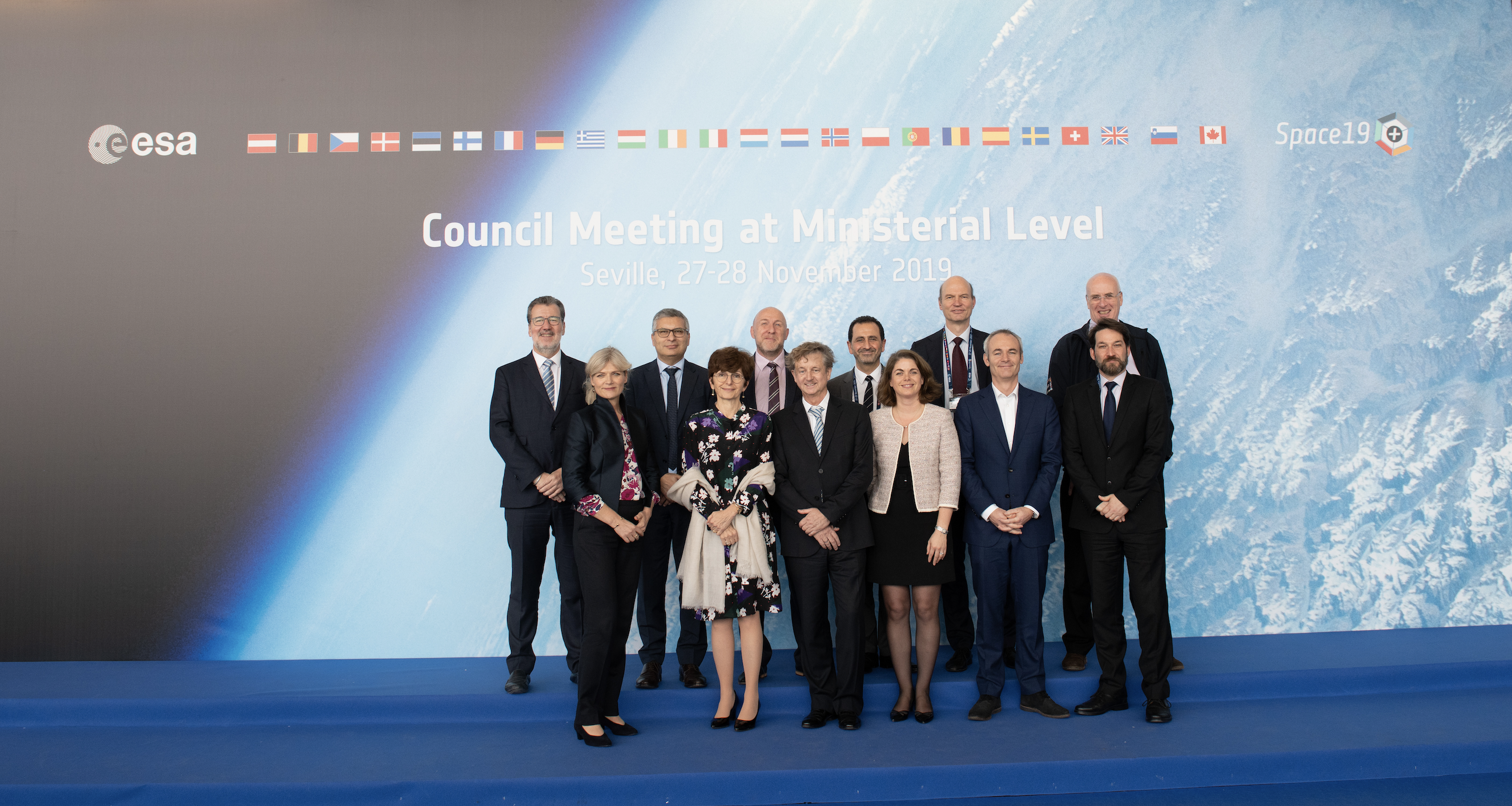Record funding for ARTES 4.0 at Space 19+

At the ESA Ministerial Council Space19+ held in November 2019 in Seville, Member States determined the funding available for ESA’s programmes for the next three years. They endorsed the most ambitious plan to date for the future of ESA and of the European space sector.
ESA’s Telecommunication Directorate received a significant boost, thanks to the ARTES 4.0 proposal. For 25 years the unique ARTES programme has supported the competitiveness of European and Canadian industry on the world market. The programme has been highly successful, and several independent studies have demonstrated its socio-economic benefits, including a 15-fold direct financial return on the public funds invested in Partnership Projects and the creation of jobs, investment and revenue through applications that bring space into our daily lives.
For Space19+ a new programmatic framework was conceived which maintains the DNA of the ARTES programme based on partnerships between ESA and industry, whilst being more flexible to adapt to the evolving marketplace.
The proposal introduced three Strategic Programme Lines which will gather activities and projects aimed at a common strategic goal:
• Space for 5G: a clear opportunity with a need from the market to support the digitalisation of businesses and society;
• Space Systems for Safety & Security: derived from the strategic importance and value that Member States see in space communications;
• Optical communication: the next technology frontier for space-based communications.
These draw on an implementation toolkit captured in the Generic Programme Lines: Core Competitiveness (CC), Partnership Projects (PP) and Business Applications and Space Solutions (BASS) which support industry in developing technical capabilities, space infrastructures and space applications. BASS is the only optional programme element within ESA to which all 22 Member States have signed up, totalling a budget increase of 45% from the 2016 subscription.
New large-scale Partnership Projects (PP) will continue federating the capabilities of European and Canadian Space Industry and de-risking significant investments that respond to market needs while generating high return on investment for European Member States and Industry.
Activities to be implemented will include:
• 5G flagship projects in several business sectors and European cities, and continuing the Sunrise project with OneWeb’s LEO megaconstellation;
• SAGA to demonstrate satellite performance as part of the European Commission's QCI (Quantum Communications Infrastructure);
• HYDRON to demonstrate a fibre-like optical network in orbit;
• A new Partnership Projects initiative Novacom that follows the successful Neosat programme in supporting prime manufacturers to develop flexible satellite product lines;
• The ESA Business Incubation Centre network, which joins the ARTES family so that new companies can be supported from their earliest stages through to growth and expansion in the dynamically evolving space marketplace.
The increased funding for ARTES 4.0 not only shows the continuing appreciation and confidence the Member States have in the programme but also the increased importance of supporting small and medium-sized companies who use space to increase their competitive advantage. The funding will enhance support to entrepreneurs, ultimately boosting the Member States’ economy by providing high-level jobs and competitive new products and services.
As the Space19+ meeting drew to a close, Magali Vaissiere, Director of Telecommunications and Integrated Applications, and head of the ARTES programme, said: “Today we made a decisive step towards Space in the digital age. I want to warmly thank the Member States for their trust and strong support over the years and I am so pleased to have seen the satcom industry strengthening its position on the global commercial market and developing into the institutional market.
“With a very successful Ministerial Council behind us, we are looking forward to a promising and exciting future in which we will shape and support innovation, not only in satellite communications but also in the down-to-earth business applications of space.” Magali Vaissiere, Director of Telecommunications and Integrated Applications


